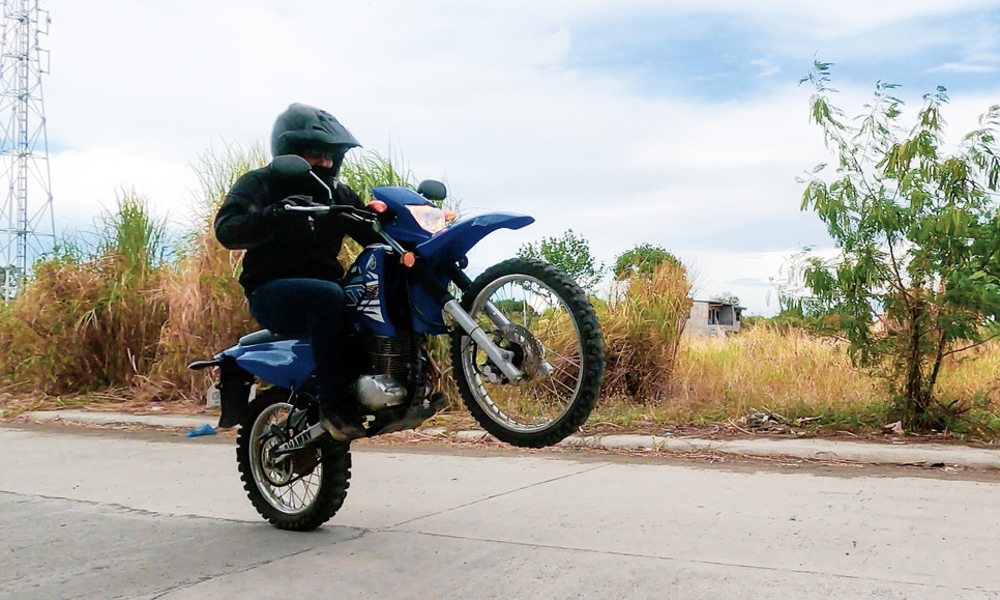
Seated on the bike, eyes focused on where I wanted to be within the next 20m, I revved the motor and popped the clutch.
As if on command, the front end lifted up like a rocket, and I gave a little tug on the bars for a little more oomph. But then it went past 80° and kept climbing, at which point my brain froze and I was hanging on for dear life. And because I was literally hanging on the throttle, the bike just kept going forward until I forced myself to let go and drop off the back of the bike. I bounced a bit on the hot cement road while the bike continued forward for a few more meters before eventually resting in the weeds.
I took a deep breath, picked myself up, and faced my instructor.
“Let’s do another round!”
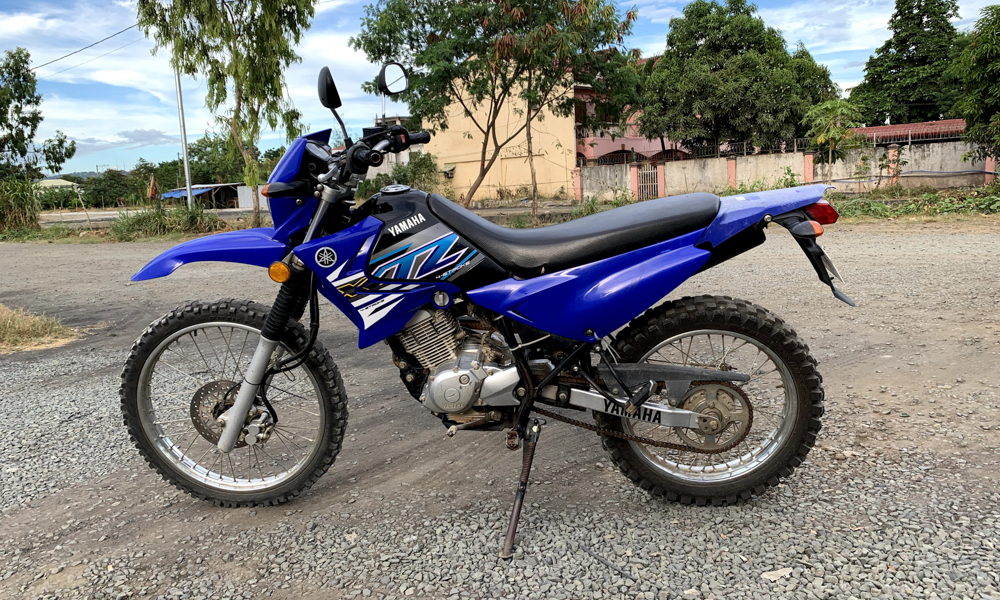
Being a lifelong fan of both two-wheel and four-wheel vehicles, wheelies and other tricks have always eluded me. I can do a J-turn, slide a car around, and pull off a stoppie on a bike, but I could never do a wheelie even if my life depended on it. So, at the height of the lockdowns last year, I thought I might as well use the time to learn this useful trick. As a practical skill, a wheelie can help you get over an obstacle on a trail like a large rock or log. Knowing what sets it off can also help you prevent it from happening, especially with a powerful bike.
So, I reached out to Coach Sam Tamayo of MX Messiah Fairgrounds for some sessions. Sam has been a motocross racer for many years and has advocated dirt riding as an essential skillset for serious riders. With traction a precious commodity in the dirt, mastering what little of it there is while still going fast will make anyone a better rider. But in my case, I told him I just wanted to scratch my wheelie itch first.
So, he set me up with two of his best instructors.
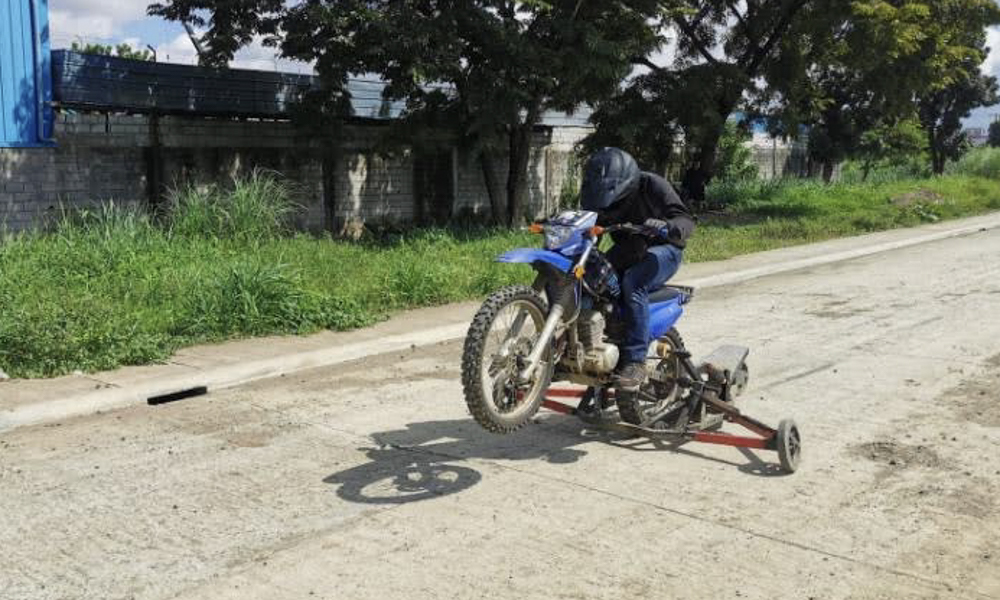
The first one, Coach Jhieriel del Rosario, taught me the first method. While you’re rolling in first gear, disengage the clutch, rev the engine high, compress the front shock by engaging the front disc, quickly “clutch up” as the fork rebounds upwards. The combination of fork rebound and instant power will, theoretically, get the front wheel up.
And it does. The key is to get everything right: timing, clutch release, brake dive, engine speed, and body position. Get one thing wrong and all you’ll get is an embarrassing little lurch. And don’t forget to cover the rear brake with your foot.
I made many mistakes over the course of several sessions:
- Not enough brake dive
- Too gradual clutch release
- Bad body position
- Not enough throttle
- Too much of this, too much of that…the list went on.
Eventually, I got the hang of it and could now get the wheelie to what felt like several feet off the ground. It was at this point I got cocky, so I revved the little Yamaha XT125 for all it was worth, popped the clutch, and sent myself and the bike hurtling into the talahib.
Of course, a little embarrassment is par for the course. What saved me and the bike from injury or ruinous damages was the nifty “wheelie trainer.” Attached to the bike via the rear wheel, it lets you get the bike all the way up to 90° until a stopper prevents you from going further back. Of course, you still need to manage the brake yourself, and if you fail to step on the rear brake like I did, it will just keep going forward.
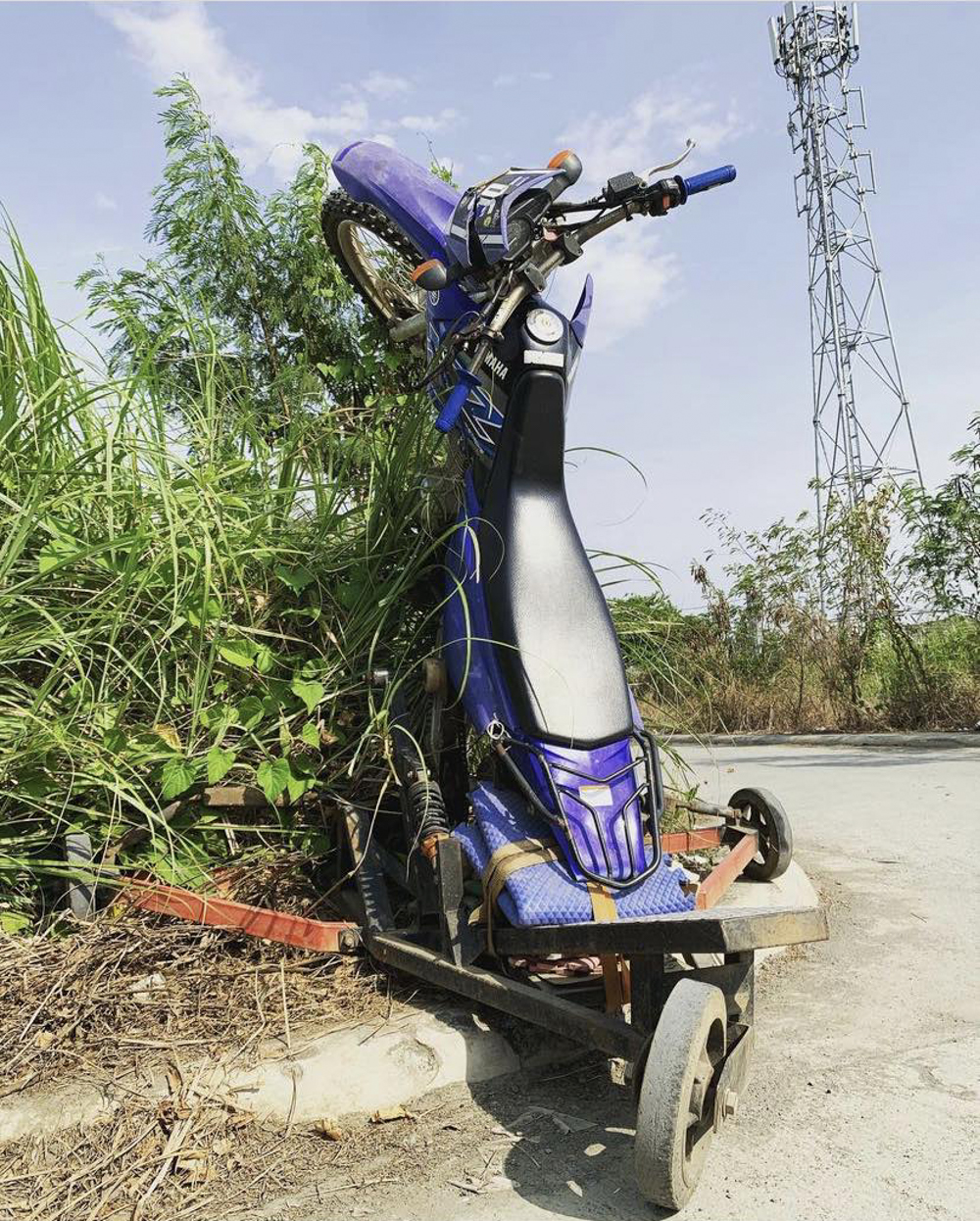
For the other method, Coach Mark Louie del Rosario (no relation to Jheriel) stepped in. A stunt rider for TV shows and manufacturer-sponsored events, Mark makes doing tricks look easy. This time, instead of compressing the fork to get the added bounce back, he wanted me to just rev the engine high and pop the clutch. And as the front end began to lift, I consciously leaned back in order to keep it up and extend the distance travelled.
More trial and error. Another visit to the talahib. In the private area where we practiced, a small group of skateboarders watched me for a few minutes, got bored with my lack of talent, and went back to their own thing.
After several more sessions, Mark decided I was ready to be freed of the trainer. True enough, without the extra drag of the wheelie trainer, popping the front up was easier. And I now also had the muscle memory to briefly tap the rear brake if I felt the front was about to go past the point of no return. All I needed to polish, Mark said, was my upper-body technique as well as my throttle control so I could extend a wheelie for more than a few feet.
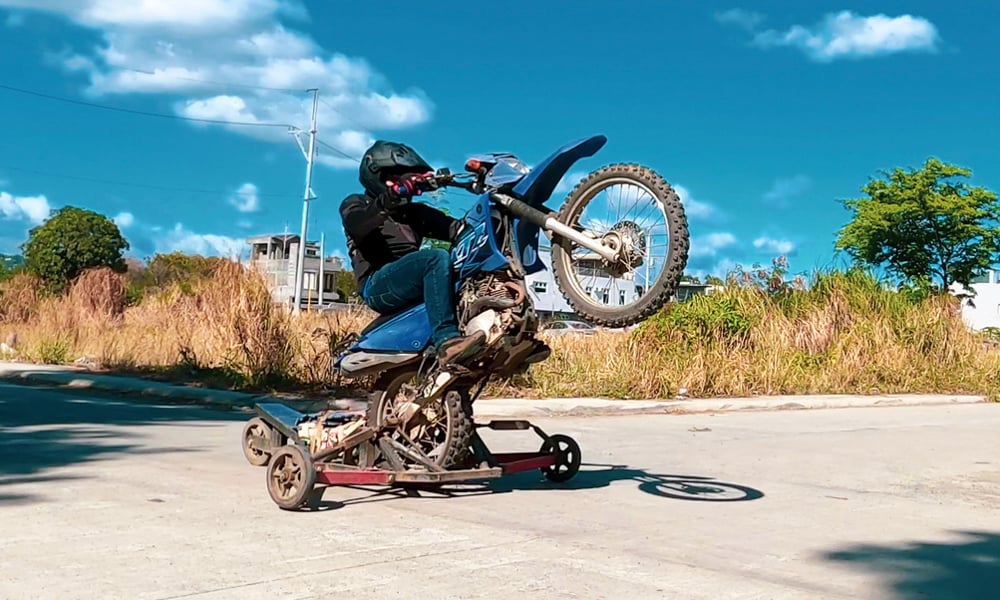
I wouldn’t rate my wheelie skills as more than average now, and I’d only place my odds of pulling a spontaneous one off my own bike at no more than 50/50 without some practice beforehand, but it’s a lot better now than before I took the classes. Each session takes at least an hour, and though it doesn’t seem like a long time, you’ll be doing so many attempts in one session that your arms, upper back, and shoulders will be exhausted after.
I found that for my best wheelies, it was all about being calm, breathing rhythmically, and being mentally in tune with what the bike was doing underneath me. Any time doubt, overthinking, or overconfidence came in, something always went wrong.
For those who are interested to learn wheelies and other riding skills, they can contact Coach Sam Tamayo at samuelmarktamayo@gmail.com. His riding track, MX Messiah Fairgrounds, is located in Taytay, Rizal.


0 Comments